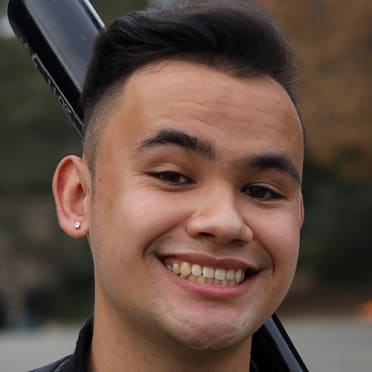No more guessing. No more speculating. No more wondering. Now, all there’s left to do is wait and see what they do.
The Pirates began their fourth MLB Draft under general manager by selecting Paul Skenes, a right-hander who has been dubbed as a generational pitching talent, with the first overall pick, kickstarting a three-day Draft. While there were a few position players sprinkled in, this Draft class, without question, will be defined by its pitching.
Here are three takeaways from the Pirates’ 2023 Draft.
1. Pitchers on pitchers
Beginning with their selection of Skenes, the Pirates’ 2023 Draft was defined by pitching. The Bucs used 14 of their 21 selections on pitchers, including seven of their eight selections on pitchers on Day 2.
“Each selection afforded the opportunity of what was in front of us, and [we tried to] take advantage of that opportunity,” Pirates senior director of amateur scouting Joe DelliCarri said. “It certainly turned out that way -- two-thirds of the numbers were pitchers -- but nothing more than that."
Of all the pitchers that the Pirates selected, all but two hailed from a Division I program, including right-hander Zander Mueth -- the club’s third and final selection of Day 1 -- who hails from Belleville (Ill.) East High School. Also of note, righty Tyler Kennedy (the Bucs' 19th-round pick) initially attended the University of Pittsburgh, but he transferred to Florida SouthWestern State College, a junior college in Fort Myers.
The selection of Skenes requires little justification given his performance and tools, but for a majority of the pitchers that the Pirates selected, their appeal lies more in potential than results. Take right-hander Khristian Curtis, for example.
Curtis was MLB Pipeline’s 197th-ranked prospect heading into the Draft, but the Pirates were able to select him in the 12th round with the 347th overall pick. His 7.03 ERA and 58 strikeouts in 64 innings with Arizona State don’t leap off the page, but he features a four-seam fastball that sits in the low-90s and hits the mid-90s, a two-seam fastball with sink, a slider with a cutter grip that rates above average, as well as a developing changeup and curveball.
There are more than a handful of pitchers whose career collegiate ERAs begin with four, five or six. Every selection has their own attributes and their own background, and on Monday, DelliCarri expressed the importance of getting these pitchers into a professional environment and making necessary tweaks.
2. No outfielders?
While the Pirates went heavy on the pitchers, the organization didn’t select a single primary outfielder. This is the first time that it hasn’t drafted a primary outfielder during a full Draft this millennium (they did not select an outfielder during the five-round 2020 MLB Draft).
DelliCarri said that the Pirates didn’t come into the Draft with the intention of excluding outfielders. As with the high volume of pitchers, it’s just the way that things shook out. That said, there is a possibility that several position players from this year’s Draft class could find themselves in the outfield.
The Pirates value positional versatility and have frequently had primary infielders experiment in the outfield. It’s too early to determine who could get reps in the outfield during pro ball, but shortstop Mitch Jebb (second round) and Charles McAdoo (13th round) are possibilities given their athleticism. Jebb has 65-grade speed on the 20-80 scale, per MLB Pipeline, and he stole 38 bases in three seasons with Michigan State. McAdoo played football for high school powerhouse De La Salle in North California before focusing on baseball at San Jose State.
"I would share that there could potentially be some versatility, certainly, with the players that we took in this year's Draft,” DelliCarri said. “It's more so from the viewpoint that it would probably be a second or third position. We see them on the infield, most certainly, all the players that we took this year position-player wise outside of the catchers."
3. Family ties
In 1996, Kenny Harrison, who starred at the University of Hawai’i, played his one and only season of Minor League ball with the Lynchburg Hillcats, the Pirates' Class A Advanced affiliate from 1995-2009. Twenty-seven years after his selection, Pittsburgh selected Harrison’s son, Kalae, in the 18th round out of North Carolina State.
Baseball is a bit of a family business for the Harrison family. Kalae’s older brother, K.J., was drafted in the third round of the 2017 Draft and recently retired to pursue coaching, while his younger brother, KaiKea, plays for USC.
During his lone season with North Carolina State, Harrison hit .313/.436/.426 with two home runs and 10 doubles.
